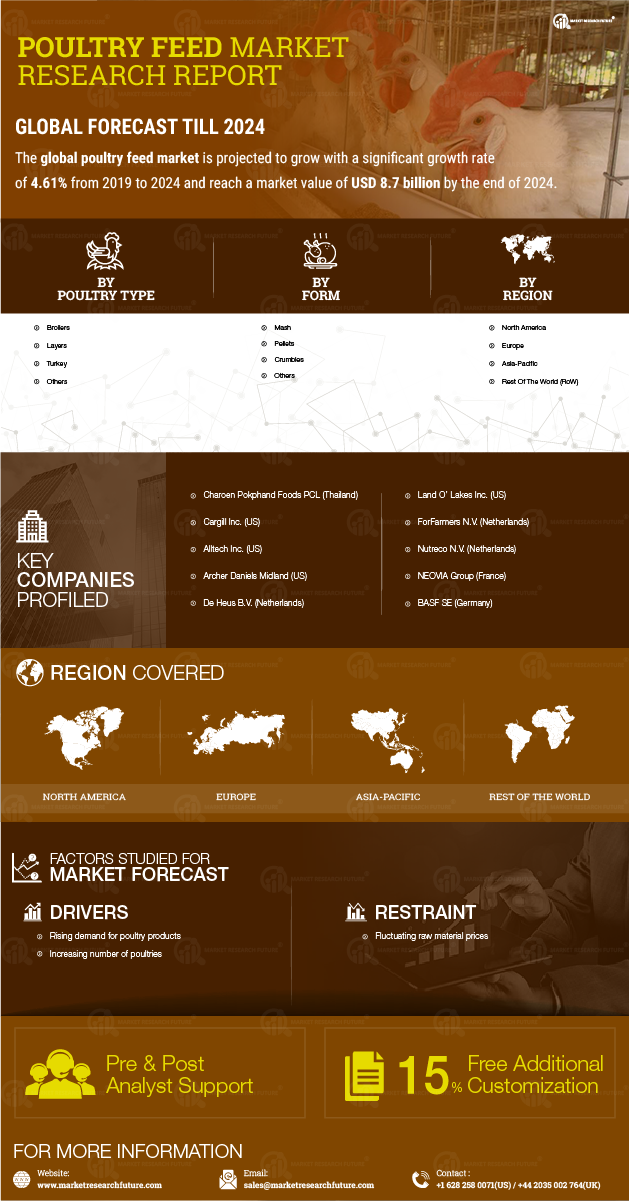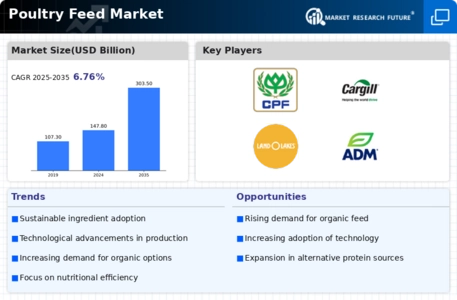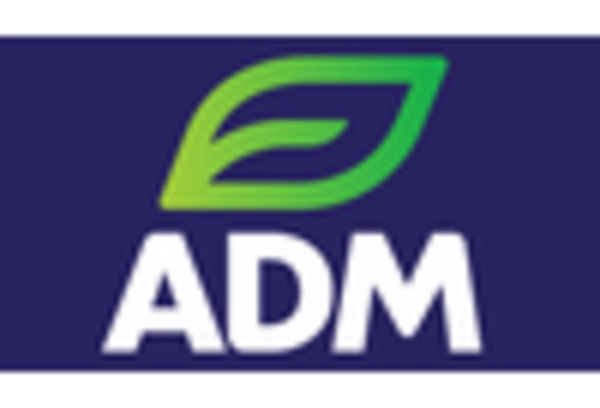Market Growth Projections
The Global Poultry Feed Industry is poised for substantial growth in the coming years. With a market valuation of 147.8 USD Billion in 2024, projections indicate a rise to 303.5 USD Billion by 2035. This trajectory suggests a robust compound annual growth rate of 6.76% from 2025 to 2035. Such growth is driven by various factors, including rising meat consumption, technological advancements, and increasing focus on sustainability. The market's expansion reflects the industry's adaptability and responsiveness to changing consumer demands and global trends.
Focus on Sustainable Practices
Sustainability is becoming a cornerstone of the Global Poultry Feed Industry. With growing concerns about environmental impact, producers are increasingly adopting sustainable practices in feed formulation. This includes the use of alternative protein sources, such as insects and plant-based ingredients, which reduce reliance on traditional feed components. As consumers become more environmentally conscious, the demand for sustainably produced poultry products is likely to rise. This shift not only addresses ecological concerns but also aligns with the projected market growth, as the industry seeks to innovate and meet consumer expectations.
Rising Global Meat Consumption
The increasing demand for poultry meat globally drives the Global Poultry Feed Industry. As populations grow and urbanization accelerates, meat consumption is projected to rise significantly. In 2024, the market is valued at 147.8 USD Billion, reflecting a robust appetite for poultry products. Countries such as China and India are leading this trend, with their growing middle-class populations seeking protein-rich diets. This surge in meat consumption necessitates a corresponding increase in poultry feed production, thereby propelling the market forward. The Global Poultry Feed Industry must adapt to meet these evolving dietary preferences.
Emerging Markets and Global Trade
Emerging markets are significantly influencing the Global Poultry Feed Industry. Countries in Southeast Asia, Africa, and Latin America are experiencing rapid economic growth, leading to increased poultry production and consumption. This trend is further supported by global trade agreements that facilitate the exchange of feed ingredients and finished products. As these markets expand, they present new opportunities for feed manufacturers to tap into. The growing interconnectedness of global trade is likely to enhance market dynamics, contributing to the overall growth trajectory of the industry.
Government Support and Regulations
Government policies and regulations play a pivotal role in shaping the Global Poultry Feed Industry. Many countries are implementing supportive measures to enhance poultry production, including subsidies and research funding. These initiatives aim to improve feed quality and safety standards, thereby boosting overall industry growth. For instance, regulatory frameworks that promote biosecurity and animal welfare are increasingly being adopted. Such government interventions are likely to create a conducive environment for market expansion, ensuring that the industry can meet the projected market value of 303.5 USD Billion by 2035.
Technological Advancements in Feed Production
Innovations in feed production technology are transforming the Global Poultry Feed Industry. Advanced processing techniques, such as extrusion and pelleting, enhance feed efficiency and nutritional value. These technologies enable producers to optimize feed formulations, leading to better growth rates and feed conversion ratios in poultry. As a result, the market is expected to experience a compound annual growth rate of 6.76% from 2025 to 2035. This growth is indicative of the industry's commitment to improving production methods and meeting the increasing demands of poultry farmers worldwide.

















Leave a Comment